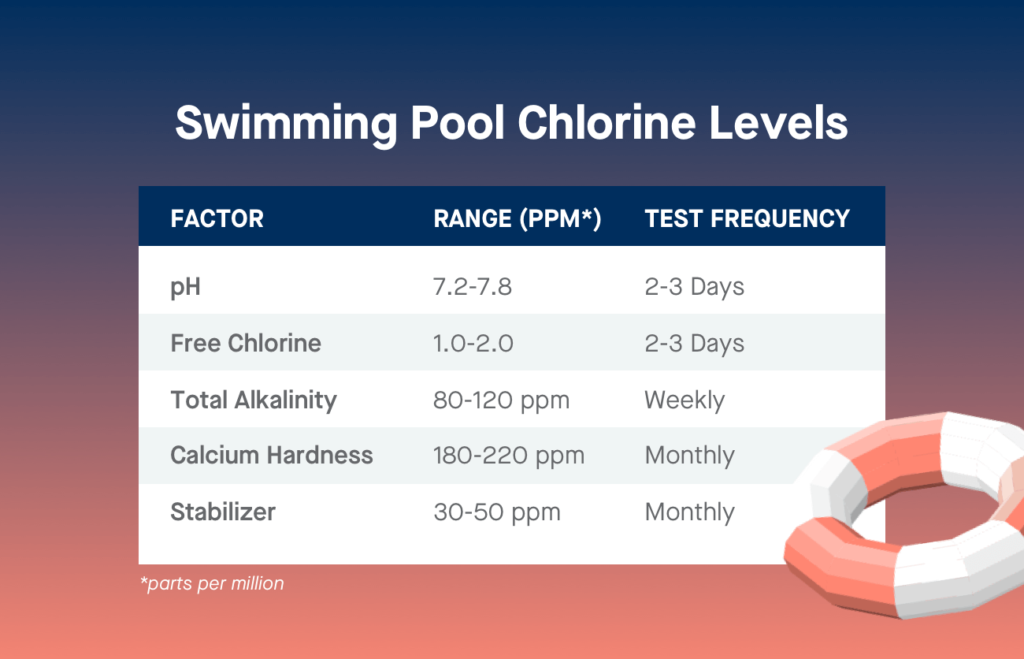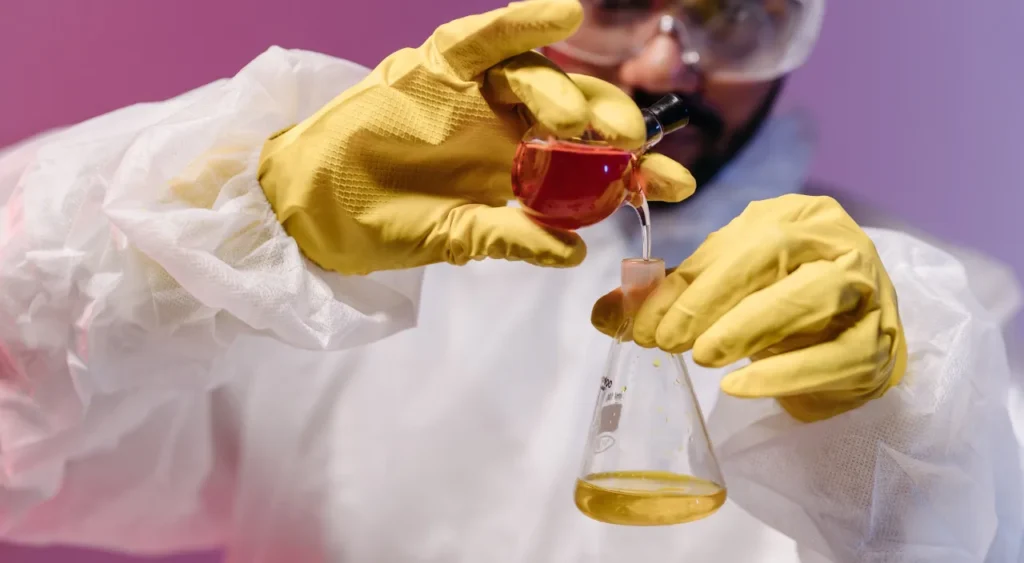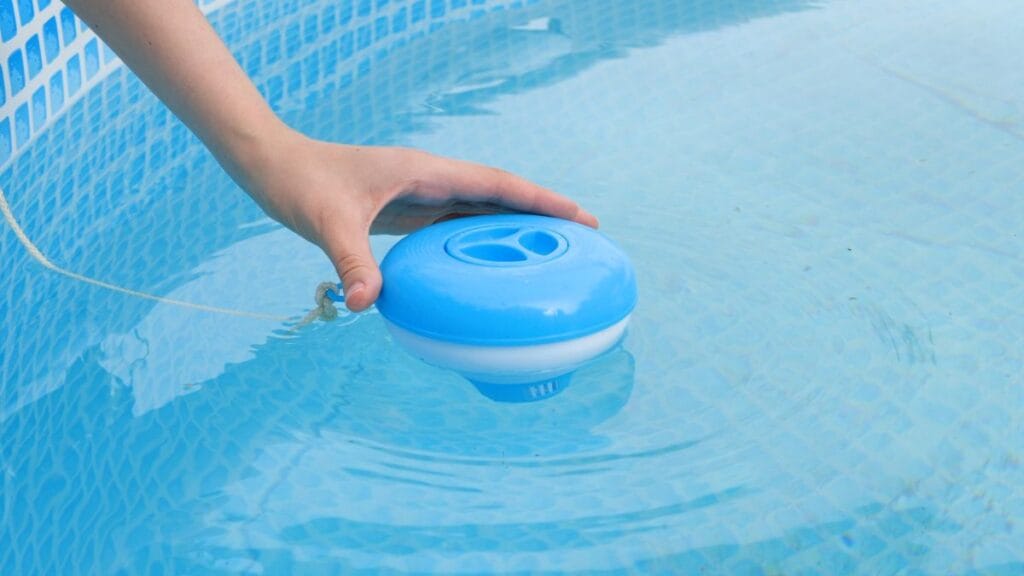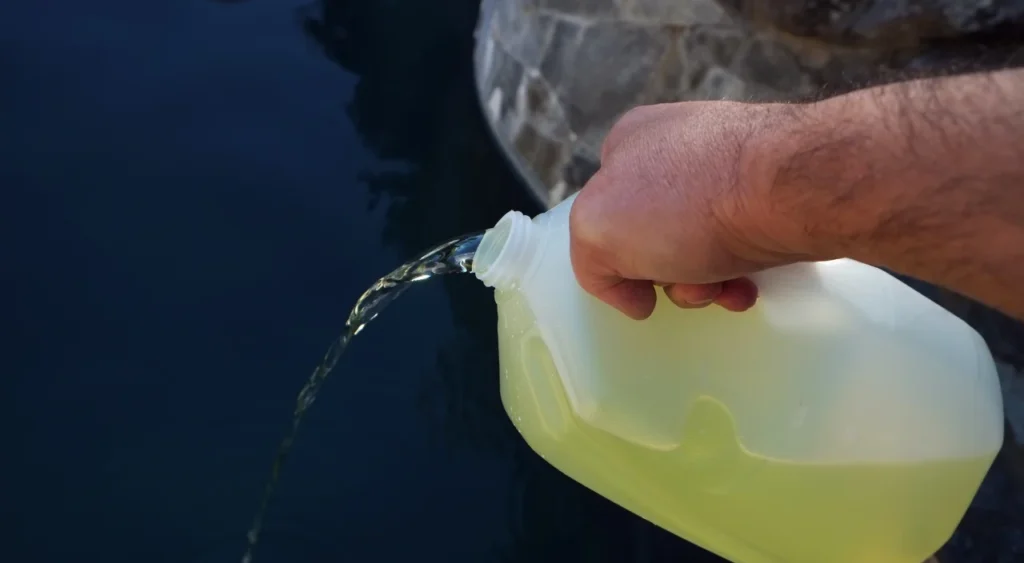Picture this: you’re ready for a perfect pool day, but the water looks murky or smells strongly of chemicals. Getting the chlorine balance just right can feel like solving a complex equation, but it doesn’t have to be overwhelming. Whether you’re a new pool owner or looking to perfect your maintenance routine, understanding how to calculate chlorine needs is essential for crystal-clear, safe swimming water.
Many pool owners struggle with finding that sweet spot – too little chlorine means bacteria and algae can thrive, while too much creates an unpleasant swimming experience and wastes money. The good news is that calculating the ideal amount of chlorine follows straightforward principles once you understand the basics.
In this comprehensive guide, you’ll discover the exact formulas, factors, and practical tips needed to maintain perfect chlorine levels year-round, ensuring your pool remains a safe and enjoyable oasis for family and friends.
How to Calculate the Ideal Amount of Chlorine for Your Pool

- Pool volume calculation is the foundation – multiply length × width × average depth × 7.48 for gallons
- Free chlorine levels should maintain 1-3 ppm for residential pools, with 2 ppm being optimal
- Shock treatments require 10 times your combined chlorine reading to break chloramines
- Water testing frequency should be 2-3 times weekly during swimming season
- Chlorine demand varies based on bather load, weather, and organic contamination
- Stabilizer levels (cyanuric acid) should stay between 30-50 ppm to protect chlorine from UV degradation
- Liquid vs. granular chlorine calculations differ in concentration and application methods
Understanding Pool Chemistry Fundamentals
Before diving into calculations, it’s crucial to understand what chlorine actually does in your pool. Chlorine acts as both a sanitizer and oxidizer, eliminating harmful bacteria, viruses, and organic contaminants that enter your water through swimmers, debris, and environmental factors.
The chlorine measurement system uses parts per million (ppm) to indicate concentration levels. Think of ppm like a recipe – just as you need the right amount of salt in cooking, your pool needs the precise chlorine concentration to function effectively without being overwhelming.
Free available chlorine represents the active sanitizing power in your water, while combined chlorine indicates used-up chlorine that has bonded with contaminants. The difference between total chlorine and free chlorine gives you the combined chlorine reading, which should ideally be less than 0.2 ppm.
The Science Behind Chlorine Effectiveness

Water pH significantly impacts chlorine efficiency. At a pH of 7.2, chlorine operates at about 80% effectiveness, while at 8.0, effectiveness drops to just 25%. This relationship explains why maintaining proper pH (7.2-7.6) is just as important as maintaining chlorine levels.
Temperature also affects chlorine consumption rates. For every 10°F increase in water temperature, chlorine consumption roughly doubles. This means summer pools require more frequent attention than cooler spring or fall conditions.
Calculating Your Pool Volume Accurately
Accurate pool volume calculation forms the foundation of all chemical dosing. Without knowing exactly how much water you’re treating, even perfect formulas become useless. Most pool chemical calculations are based on 10,000 gallons as a standard reference point.
For rectangular pools, multiply length × width × average depth × 7.48 (gallons per cubic foot). Round pools use the formula: 3.14 × radius² × average depth × 7.48. Oval pools require: length × width × average depth × 5.9.
| Pool Shape | Formula | Example Calculation |
|---|---|---|
| Rectangle | L × W × D × 7.48 | 20′ × 40′ × 5′ × 7.48 = 29,920 gallons |
| Round | 3.14 × R² × D × 7.48 | 3.14 × 12² × 4′ × 7.48 = 10,742 gallons |
| Oval | L × W × D × 5.9 | 15′ × 30′ × 4′ × 5.9 = 10,620 gallons |
Don’t forget to account for irregular depths. Most pools have shallow and deep ends, so calculate the average depth by adding shallow end depth plus deep end depth, then dividing by two.
Measuring Techniques for Accuracy
Use a measuring tape rather than estimating distances. Even small measurement errors can result in significant calculation mistakes when multiplied across the entire volume formula. For complex pool shapes, consider breaking the pool into geometric sections and calculating each separately.
Professional tip: If you’re unsure about your calculations, many pool supply stores offer free volume calculation services when you provide accurate measurements.
Determining Your Pool’s Chlorine Demand

Chlorine demand testing reveals how much chlorine your specific pool consumes under current conditions. This varies dramatically based on bather load, organic debris, weather patterns, and existing water chemistry.
To perform a demand test, bring your pool to proper chlorine levels (2-3 ppm), then test again after 24 hours of normal use. The difference represents your daily chlorine consumption under those specific conditions.
Factors that increase chlorine demand include:
- Heavy swimmer loads – each person adds organic compounds
- Hot, sunny weather – UV rays break down chlorine rapidly
- Organic debris – leaves, grass, and dirt consume chlorine
- Low stabilizer levels – chlorine degrades faster without cyanuric acid protection
- High pH levels – reduces chlorine effectiveness, requiring higher doses
Seasonal Demand Variations
Summer pools typically require 2-3 times more chlorine than spring or fall pools due to increased usage, higher temperatures, and longer daylight hours. Plan your chemical budget accordingly, stocking up during off-season sales.
“Understanding your pool’s unique chlorine demand is like knowing your car’s fuel efficiency – it helps you plan ahead and avoid unexpected shortages during peak usage periods.”
Winter pools in mild climates may need minimal chlorination, while covered pools might require shock treatments when reopened due to anaerobic bacterial growth.
LEIA TAMBÉM: The Ultimate Guide to Pool pH Balance: Why It Matters More Than You Think
Liquid Chlorine Calculation Methods
Liquid chlorine (sodium hypochlorite) typically contains 10-12.5% available chlorine and offers the most precise dosing control. Calculate liquid chlorine needs using this formula: (Pool gallons ÷ 10,000) × desired ppm increase × 13 = ounces needed.
For example, to raise chlorine by 2 ppm in a 20,000-gallon pool: (20,000 ÷ 10,000) × 2 × 13 = 52 ounces of liquid chlorine.
The advantages of liquid chlorine include:
- Immediate dissolution and availability
- No residue or buildup in pool systems
- Precise dosing capability for fine adjustments
- Lower cost per gallon of chlorine added
However, liquid chlorine has a short shelf life and loses potency over time, especially when exposed to heat and sunlight. Purchase only what you’ll use within 2-3 months for optimal effectiveness.
Application Best Practices

Add liquid chlorine to the deep end of your pool with the pump running to ensure proper distribution. Never mix liquid chlorine with other chemicals, and always add chemicals to water, never water to chemicals.
Store liquid chlorine in a cool, dry place away from direct sunlight and other pool chemicals to maintain potency and prevent dangerous chemical reactions.
Granular Chlorine Calculations
Granular chlorine comes in different forms with varying chlorine percentages. Calcium hypochlorite typically contains 65-70% available chlorine, while dichlor contains about 56%, and trichlor contains approximately 90%.
The basic formula for granular chlorine: (Pool gallons ÷ 10,000) × desired ppm increase × (16 ÷ % available chlorine) = ounces needed.
For calcium hypochlorite (65% available chlorine) to raise levels by 1 ppm in 15,000 gallons: (15,000 ÷ 10,000) × 1 × (16 ÷ 65) = 0.37 ounces.
Dissolution and Distribution
Pre-dissolve granular chlorine in a bucket of pool water before adding to prevent bleaching of pool surfaces and ensure even distribution. Add the dissolved solution to various points around the pool perimeter while the circulation system runs.
Trichlor tablets work well for automatic chlorination but slowly increase cyanuric acid levels. Monitor stabilizer levels monthly when using trichlor to prevent over-stabilization.
Shock Treatment Calculations
Pool shocking (super-chlorination) eliminates chloramines, algae, and organic contaminants that regular chlorination can’t handle. Shock treatments require raising chlorine levels to 10 times the combined chlorine reading, with a minimum of 10 ppm.
Calculate shock requirements: (Pool gallons ÷ 10,000) × (target ppm – current ppm) × chlorine factor = amount needed.
For non-chlorine shock (potassium monopersulfate), use 1 pound per 10,000 gallons for routine oxidation. This product doesn’t add chlorine but oxidizes contaminants and restores chlorine efficiency.
When to Shock Your Pool
Regular shocking should occur weekly during peak season, but immediate shocking is necessary when:
- Combined chlorine exceeds 0.5 ppm
- Algae growth appears
- Water appears cloudy despite proper filtration
- Strong chlorine odor develops
- After heavy bather loads or pool parties
Shock treatments work best when added in the evening to prevent UV degradation and allow overnight contact time for maximum effectiveness.
Testing and Monitoring Systems

Accurate testing ensures your calculations translate into proper water chemistry. Test chlorine levels 2-3 times weekly using either test strips, liquid drop kits, or digital meters.
Liquid test kits (DPD method) provide the most accurate readings for chlorine testing. Test strips offer convenience but can be less precise, especially when exposed to humidity or past expiration dates.
Digital testing equipment provides laboratory-level accuracy but requires regular calibration and higher initial investment. Consider professional water analysis monthly to verify your home testing accuracy.
Creating a Testing Schedule
Develop a consistent testing routine:
- Monday/Wednesday/Friday: Basic chlorine and pH testing
- Weekly: Complete water analysis including alkalinity and hardness
- Monthly: Professional laboratory analysis for comprehensive chemistry review
- Seasonally: Equipment calibration and test kit replacement
Document your test results to identify patterns and predict chemical needs based on usage and weather conditions.
Troubleshooting Common Calculation Errors
Calculation mistakes often stem from incorrect pool volume estimates or misunderstanding chlorine product concentrations. Double-check measurements and verify product labels before applying formulas.
Common errors include confusing total chlorine with free chlorine readings, using outdated or degraded chemicals, and failing to account for pH impact on chlorine effectiveness.
If your calculated additions don’t achieve expected results, recheck your pool volume calculation first. Many pools are smaller than owners estimate, leading to over-chlorination when following standard formulas.
Adjustment Strategies
When calculations don’t match results, make small incremental adjustments rather than large corrections. Pool chemistry responds gradually, and patience prevents overcorrection cycles that waste chemicals and create swimmer discomfort.
Consider factors like recent rainfall, heavy usage, or equipment malfunctions that might affect chlorine consumption beyond normal calculations.
Mastering Your Pool’s Chemical Balance
Calculating the ideal amount of chlorine for your pool becomes second nature once you understand the fundamental principles and formulas. Remember that successful pool maintenance combines accurate calculations with consistent testing and adjustment based on real-world conditions.
Your pool’s unique characteristics – size, usage patterns, environmental factors, and equipment efficiency – all influence chlorine requirements. Start with calculated amounts, then fine-tune based on test results and swimming conditions.
The investment in proper chlorine calculation knowledge pays dividends in crystal-clear water, reduced chemical costs, and enhanced swimming enjoyment. Master these techniques, and you’ll confidently maintain professional-quality water that’s safe, comfortable, and inviting year-round.

